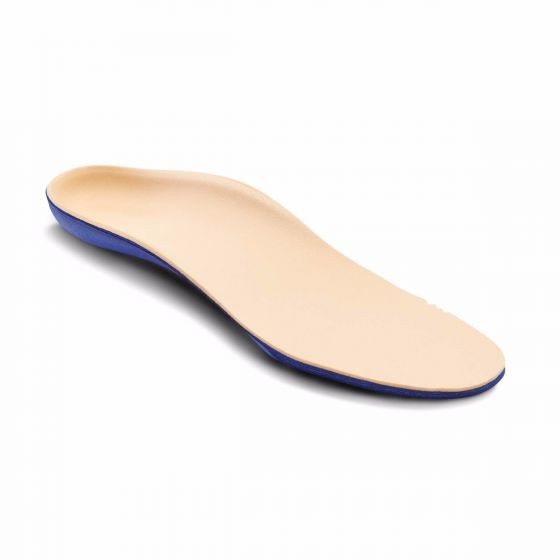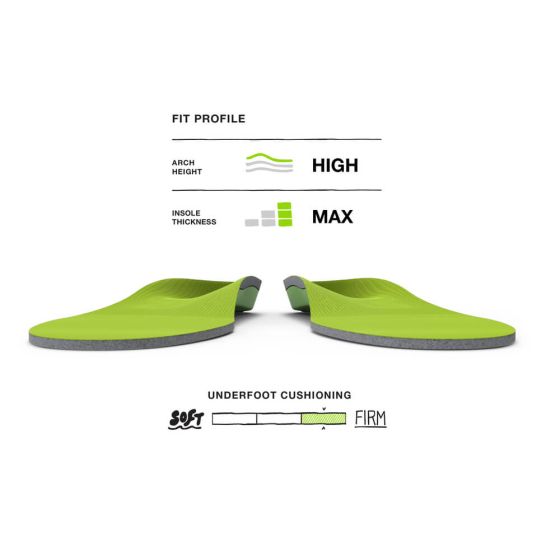free shipping desktop
What Are Arch Supports in Shoes?

Arch support in shoes refers to the orthopedic design or component in the arch area used to promote proper lower body alignment, stability, and comfort. Arch supports can be beneficial to individuals with flat feet (fallen arches) or high arches, as well as those that overpronate.
These supports come in a variety of forms and can vary in thickness and firmness. The most common type of arch support can be found in insoles or inserts that are placed inside the shoe. Usually, an arch-supporting insoles will have a contoured design with a deep heel cup and raised arch area.
The arch support allows the arch to rest on the supportive area to prevent it from collapsing and helps prevent overpronating. It also keeps our feet in a natural position for lower body alignment and reduces strain on joints, muscles, tendons, and ligaments in the foot and lower leg.
What Are Arch Supports Made From?
Depending on your foot type and need for arch supports, the material can vary. For example, if you overpronate, a firmer arch support made with a rigid plastic base may be more appropriate. Below are some common materials used in the construction of arch supports:
- Foam - Foam materials, such as EVA (ethylene-vinyl acetate) or polyurethane foam, are widely used in arch supports. They offer cushioning, shock absorption, and flexibility while providing support to the arch. Heat-moldable insoles are made of a foam material that can be molded to your foot using a heat source for customized support. Although, the heat-moldable foam can be supportive, a firmer material may be necessary for those needing more support.
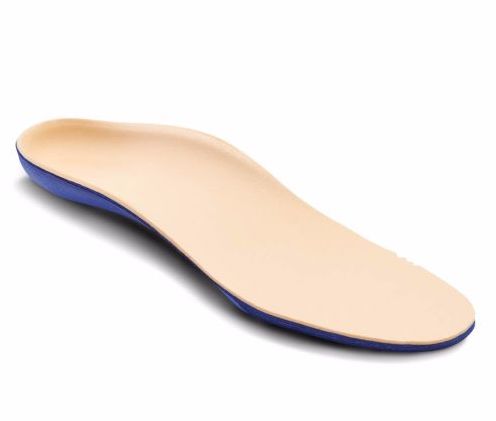
- Gel - Gel inserts or cushions are another popular choice for arch supports. They are typically made of silicone or thermoplastic elastomer materials. Gel provides excellent shock absorption and conforms to the shape of the foot, offering customized support and comfort. They are durable and can provide lasting support – even after many uses. Gel inserts are a good choice for heel pain or ball of foot pain as well.
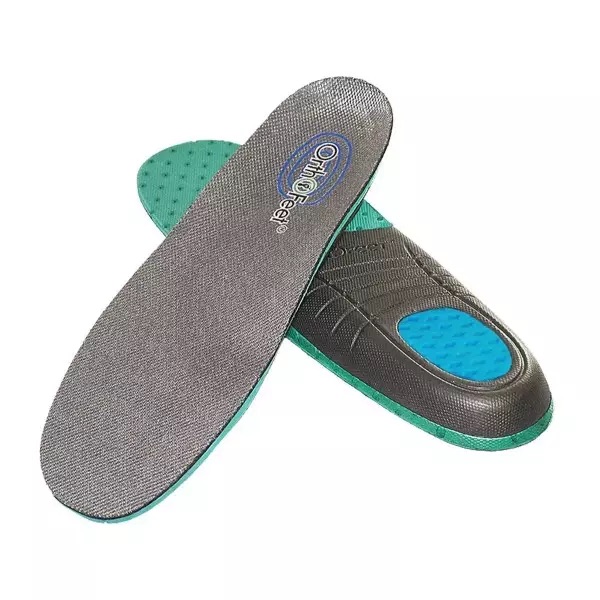
- Plastic or Polypropylene: Rigid arch supports, often referred to as orthotics, can be made from plastic or polypropylene. These materials offer a higher level of support and stability. Rigid arch supports are designed to control foot motion, correct alignment, and distribute pressure evenly across the foot. Typically, the insoles will have a plastic base for reinforcement and the footbed is a high-density foam for comfort. Rigid insoles are a good choice for foot conditions like plantar fasciitis and overpronation.
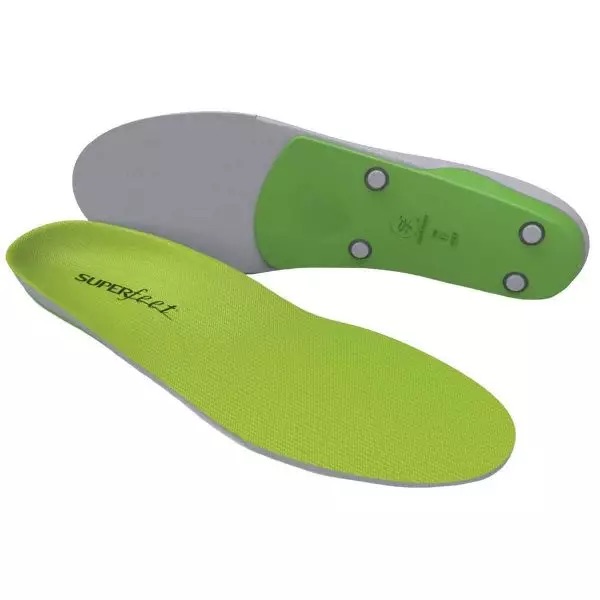
- Cork - Cork is a natural material that is sometimes used in arch supports, particularly in custom-made orthotics. Cork offers both support and shock absorption properties and can be molded to the individual's foot shape. Cork also has antimicrobial properties that can help with foot odors and keeping your footwear fresh.
- Leather: Leather is occasionally used in the construction of arch supports, particularly in higher-end or custom-made options. Leather offers durability, breathability, and a more natural feel against the foot. This material is generally not the best for arch support but can have other foot benefits like temperature regulation.
Does Everyone Need Arch Support?
They are not necessary for everyone. It’s not required for everyone to have arch support. Some people do just fine with shoes that do not include special inserts. However, if you have back, hip, knee, or foot pain, arch support may be useful for you. Below is more information about each of these situations:
- Back pain – Your lower back is made up of a complicated mixture of nerves, ligaments, joints, bones, and muscles. If these are misaligned or become injured, pain or discomfort may occur in your lower back. Arch support can help alleviate lower back pain by correcting the position of your feet and aligning your lower body.
- Hip pain – Hip pain may be caused by things like arthritis or injury and get worse over time. In addition, body alignment and biomechanics can cause hip pain or make it worse. Similar to backpain, arch support can help with foot positioning and alignment of your lower body.
- Knee pain – The most common reasons for knee pain include previous injuries, arthritis, or inadequate lower body biomechanics. Since we use our arch as a spring for forward momentum, using arch supports can help position our feet to improve our gait and put less stress on the knees.
- Foot pain – Our feet are designed to support the full weight of your body. For individuals with flat feet, the weight is not being distributed evenly and may put added strain on joints and ligaments that can lead to micro tears, inflammation or injuries. Using arch supports can help position our feet to spread our body weight across the foot as we move and help improve our natural gait.
Which Foot Conditions Do Arch Supports Help?
If you experience any foot discomfort or pain, supportive insoles can be a good way to rectify the issue and alleviate the pain. In some more severe cases, a custom orthotic may be necessary to provide the proper support for your foot type. Below are some of the situations where arch supporting insoles are a great solution:
- Flat feet – Those with flat feet may have pain in the arch or heel of the foot. A contoured insole with a raised arch can help support the arch area. Using arch supports with flat feet may have an adjustment period with some discomfort but should be resolved within 1-2 weeks of wearing the arch supports. If you continue to experience discomfort, stop wearing the arch supports and contact a podiatrist or foot specialist.
- High arches – High arches can cause the inverse effect on our gait with our feet not rolling far enough inward. This is also referred to as supination. It can cause ankle pain, plantar fasciitis, or shin splints. Arch support will help balance the foot and prevent some of these symptoms. Consider choosing an insole with a more rigid base and high arch area.
- Plantar fasciitis – The plantar fascia is the band of tissue that connects the heel bone to the toe bones and forms the arch. Repetitive impact on the plantar fascia from activities like running or high-impact sports can weaken this tendon and cause it to become inflamed. This is known as plantar fasciitis. With the right arch supports in place, the plantar fascia can be supported and less likely to become strained. Choosing a firm insole can support and cushion your arch to help prevent this foot condition from occurring.
- Obesity – Being overweight makes it more likely you will experience conditions that lead to foot conditions like fallen arches and overpronation. Extra weight can place pressure on the bottom half of the body and cause back pain, as well. Arch support ensures your feet are supported and aligned to help reduce discomfort in your lower body and spread weight evenly across your feet.
How Firm Should Arch Supports Be?
Not every pair of insoles with arch support are going to be the same. People need insoles for a variety of reasons, so there are many styles and types to choose from. For many people, an over-the-counter shoe insert will do the job. However, some people who have biomechanical issues, diabetes, or recurring injuries will need custom orthotics made for their specific foot condition.
When you are choosing a pair of insoles, the most important factor to consider is the amount of support you require. A firmer material may be needed for flat feet or high arches to get adequate support.
In addition, insoles should match the contours of your feet. If they are too high, this can cause some discomfort. Choose insoles with a selection of arch heights to get the right match for your needs. Consult with a foot specialist or podiatrist if you are not sure the best support for your foot type.
Are Arch Supports Necessary Even When at Home?
Using supportive foot devices at home depends on the individual and their foot structure. If you do not experience foot pain when walking barefoot, then added support may not be necessary while at home.
If you have foot pain or discomfort, when walking barefoot, choosing a footwear option that allows for supportive insoles is suggested. Also, if you have a job that requires prolonged periods of standing on your feet, the use of arch supports at home might help prevent future foot pain with the added comfort and support.
If you have a favorite slip-on or house slipper but it does not provide the proper foot support, see if the insole can be replaced with a more supportive insole.
Final Thoughts
Are you ready to access great arch support to stop foot pain or other problems? At FlowFeet, we offer a wide selection of arch supportive insoles. All of the insoles are made to offer therapeutic relief and comfort. Many have unique features to help with issues like high arches, heel pain, flat feet, and more. Check out our selection of insoles today and find the ones that meet your needs.
Sources:
https://www.cfac.net/2021/03/05/how-do-i-know-if-i-need-arch-support/
About author:
Derek Roach is a foot health expert with over a decade of experience in the orthopedic shoe industry. He has helped thousands of customers find the right footwear for their unique foot conditions. His expertise has been featured in major publications such as CNN, Women's Health Mag, HuffPost, and Healthline. Passionate about foot health and comfort, Derek provides practical advice to help people improve mobility and reduce foot pain through proper footwear choices.




